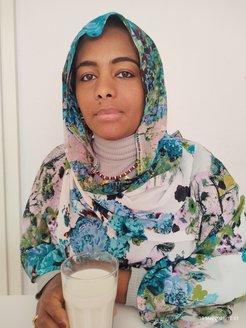The Evolution of Lactase Persistence in Sudan and South Sudan
Scientists show that evolution of the ability to digest milk in Sudanese populations has been shaped by complex interactions of gene-flow and selection

Humans are the only known species in which some individuals are able to digest milk throughout their life. Therefore, lactase persistence, or the ability to digest milk as an adult, has long been of interest to the scientific community. Approximately 20 years ago, researchers identified a single mutation in Europeans responsible for this trait. In the following years, four additional variants have been identified in milk-drinking Arabic and African populations. However, studies focusing on lactase persistence in Africa have rarely concentrated on all five alleles and many African regions are still under-studied.
In this study, researchers investigated all currently known polymorphisms associated with lactase persistence in 18 Sudanese and South Sudanese populations. Populations inhabiting this diverse area practice a variety of different subsistence patterns, with varying dependency on the consumption of milk and milk products, not only from cows but also from camels and goats.
The scientists found populations that practice pastoralism have higher frequencies of lactase persistence-associated alleles than populations that do not keep livestock. In particular, the Beja people inhabiting the Sudanese coastal regions show one of the highest proportions of milk-digesters globally.
“What is really interesting here is that compared to other populations with a high proportion of milk-digesters, such as northern Europeans or the Maasai of Kenya, where lactase persistence is caused by a single genetic variant, the Beja people carry three different variants associated with lactase persistence,” says Nina Hollfelder, lead author of the study and a postdoc at Uppsala University.
The uncovered diversity of lactase persistence-associated alleles shows that gene-flow has been one of the drivers that shaped the landscape of lactase persistence in Sudan and South Sudan.

“Our study highlights the importance of northeast Africa to the understanding of gene-culture coevolution. Aiming at higher sample coverage of the region will help us disentangle undiscovered variants that might have been selected for through the evolution of the lactase gene,” emphasizes Hiba Babiker, co-author of the study and a visiting researcher at the MPI-SHH.
“What is also interesting is that some of the lactase persistence-associated alleles have not been observed in such high frequencies previously,” adds Carina Schlebusch, senior author of the study and assistant professor at Uppsala University.
Lactase persistence has been shown to be under strong positive selection in Europeans and East Africans, indicating that people who were able to digest milk had, historically, a higher fitness. In this study, the researchers were able to show that the signals observed in the Sudanese populations are consistent with positive selection.
This is the first time all five lactase persistence-associated alleles have been investigated in Sudan and South Sudan. However, the Nilotic people of South Sudan, known to be well-adapted to milk digestion, showed no evidence for a genetic cause of lactase persistence.
“This really shows us that lactase persistence in Africa is much more complex than our current understanding. It also demonstrates that more efforts are needed to understand the drivers of lactase persistence in Africa,” says Mattias Jakobsson, senior author of the study and a professor at Uppsala University.

